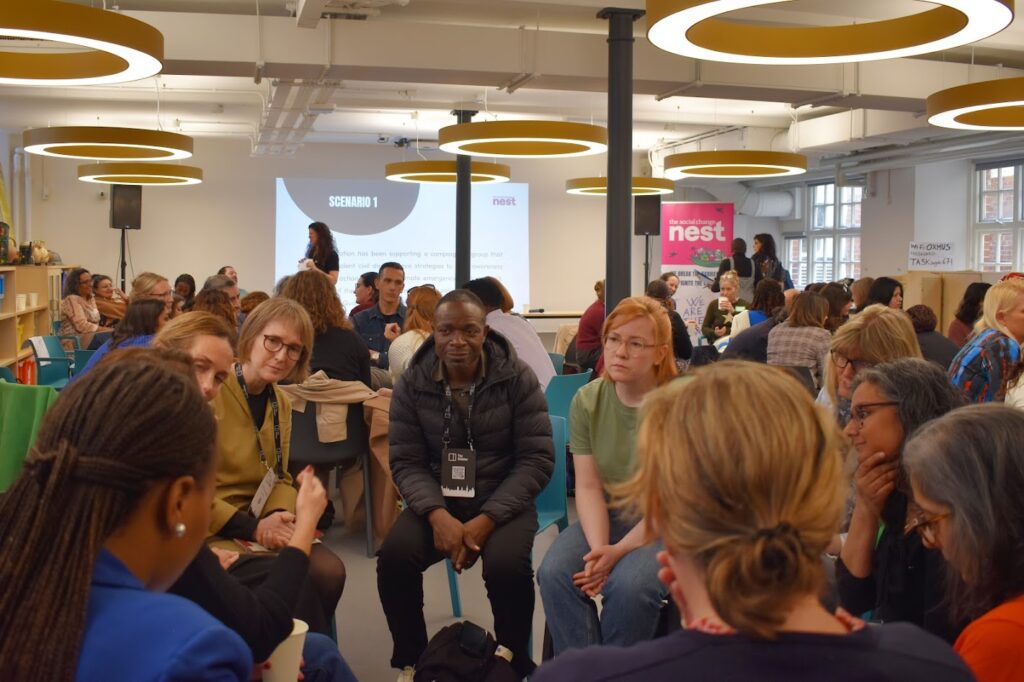The 3 Biggest Myths About Funding Grassroots Movements
Many funders want to support grassroots movements, lived experience leaders, and community-led initiatives, but long-standing myths often hold them back. Concerns about risk, impact, and sustainability prevent funding from reaching some of the most effective changemakers.
These myths aren’t just inaccurate—they reinforce systemic barriers that exclude grassroots groups from accessing the support they need. Let’s break down three of the biggest misconceptions and why they don’t hold up.
Myth #1: “Grassroots groups are too risky to fund.”
🚫 The Reality: Risk in funding is about perception, not reality.
The idea that grassroots groups are inherently high-risk often stems from their lack of formal structures. Many don’t have charitable status, large reserves, or traditional governance frameworks—which can make funders hesitant. But a lack of formal structure does not mean a lack of accountability.
In fact, grassroots groups are often deeply embedded in their communities, with strong informal governance and local trust. Many operate on volunteer-led models and are more agile and responsive than larger charities.
Instead of asking whether grassroots groups meet traditional compliance standards, funders should ask:
- Are we assessing risk based on actual evidence or just internal policies?
- Are we prioritising administrative structures over real-world impact?
- Are there alternative ways to provide financial oversight (e.g., fiscal hosting) without unnecessary barriers?
The real risk isn’t funding grassroots groups—it’s excluding them from funding altogether, limiting their ability to create change.
BONUS READ: What is Risk? Why Does it Matter?
Myth #2: “Grassroots movements don’t have enough impact.”
🚫 The Reality: Grassroots groups often drive the most transformational change.
Impact is often measured in scalability, reach, and formal metrics—which don’t always reflect the true influence of grassroots movements. Many funders look for measurable outputs, such as the number of beneficiaries served or revenue growth, rather than deeper systemic change.
But some of the most powerful social movements in history—those that changed laws, shifted public attitudes, and built new systems of care—started at the grassroots level. Their impact is often long-term, distributed, and not easily quantified by traditional grant reports.
Instead of asking whether grassroots groups fit within rigid impact frameworks, funders should ask:
- Are we defining impact too narrowly?
- Are we prioritising scale over depth?
- Are we overlooking movements that are shaping policies, narratives, and communities in ways that can’t be captured in a spreadsheet?
When funders expand their definition of impact, they open the door to bold, innovative solutions that don’t just address symptoms but transform systems.
Myth #3: “Grassroots groups aren’t financially sustainable.”
🚫 The Reality: Grassroots groups are built to be resourceful and adaptive.
One of the biggest concerns funders have is that grassroots groups won’t survive beyond their grant funding. Many funders hesitate to invest in groups that don’t have long-term funding strategies or large reserves.
But the assumption that grassroots groups can’t sustain themselves ignores the fact that many already do—just not in traditional ways. Many grassroots organisations:
- Operate with lean, adaptive models, making them more resilient than larger charities with high overheads.
- Rely on community support, crowdfunding, and volunteer networks—forms of sustainability that aren’t always recognised by funders.
- Don’t need to exist forever—some grassroots movements are designed to be temporary, addressing urgent needs in the moment.
Instead of asking whether grassroots groups fit traditional financial models, funders should ask:
- Are we assuming that grassroots groups should function like large charities?
- Are we creating artificial barriers that prevent groups from accessing funding?
- Are we supporting sustainability beyond just grant cycles (e.g., skills-building, networking, flexible funding)?
When funders provide flexible, trust-based funding, they help grassroots groups develop their own sustainable strategies—on their own terms.
Final Thoughts
Funders who move beyond these myths unlock new opportunities to support bold, community-led change. Instead of acting as gatekeepers, they can become partners in grassroots innovation, helping groups thrive without imposing unnecessary barriers.
The most impactful funders are those who challenge traditional funding norms, trust grassroots leadership, and prioritise real-world change over bureaucracy.
💡 Are you ready to rethink how you fund grassroots movements? Download our Guide to Funding Grassroots Social Change
- Blogs

